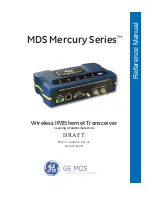
August 2020
Reference Manual
L231040 Rev AD
6
Note:
When a stilling well is
used, care should be
exercised when installing
the tube to center it in
the chamber so that the
float can freely travel the
entire length of the
probe. Stilling wells are
required for transmitters
over 10 feet.
The Calibration range of the transmitter may be field stored
in non-volatile memory by using the float and push buttons.
The push buttons are located on the front panel inside the
condulet. See section on Calibration for more details.
Section 2: Instrument Description
2.0 Transmitter Detail Description
The LTM-350 is an assembly of two major components:
The Sensor Tube Assembly.
This 5/8” diameter stainless
steel probe, sealed on one end, with the magnetostrictive
waveguide in its center. In addition to the magnetostrictive
waveguide, the tube also houses the optional temperature
sensor and piezoelectric sensor. The tube is made to lengths
2 – 30 ft. in rigid construction.
The Electronics Housing.
The extruded aluminum housing
has two separate compartments. One side contains the
microprocessor
board
assembly
and
calibration
pushbuttons. The other side contains the wiring termination
board. The electronics module is connected to the detector
board of the sensor tube assembly via a plug-in cable.
The main board is surface mounted component
construction utilizing the latest in integrated circuit
technology. It contains a high-speed micro controller, D/A
Converters, and HART modem.
2.1 Theory of Operation
The LTM-350 Level Transmitter is based on the principle of
magnetostriction first used for digital delay lines and later
for precision distance or displacement in the machine tool
industry. The principle, if designed and applied properly,
has potentially very high measurement resolution, typically
better than 0.001 inch. In the machine tool industry such a
high resolution is desirable. In the liquid level measurement
application, however, a resolution of 0.03 inch is more than
adequate.
In a brief description, the magnetostrictive principle consists
of a wire extruded and heat treated under carefully chosen
conditions to retain desired magnetic properties, which is
pulsed by a circuit with a relatively high current pulse. The
high current pulse produces a circular magnetic field as it
travels down the wire at the speed of light. Another
magnetic field generated by a permanent magnet, placed
near or around the wire at some distance from the point of
entry of this pulse, interferes with the magnetic field of the
pulse and torsional force results at the collision point.
The effect of this torsion force is to twist the wire at this
point producing a torsion wave traveling towards both ends
of the wire. The propagation time of this wave is measured
precisely and, if the wire properties remain stable, it is very
repeatable at about 5-10 microseconds per inch, which is
approximately the speed of sound in that medium. By
measuring the exact number of microseconds it took the
torsion wave to reach a designated termination point of the
wire, the distance to the magnet from this termination point
can be easily calculated.
A high-speed micro controller is utilized in the design to
process and calculate the elapsed time measurement.
Accurate crystals are used for the time base to resolve sub-
microsecond timing increments. The binary number,
equivalent to the microseconds of the echo travel time, is
written to an output D/A Converter and subsequently
converted to a 4-20 mA signal proportional to the item
measured. The larger the number of microseconds there
are, the greater the distance of the float from the head of
the transmitter.







































